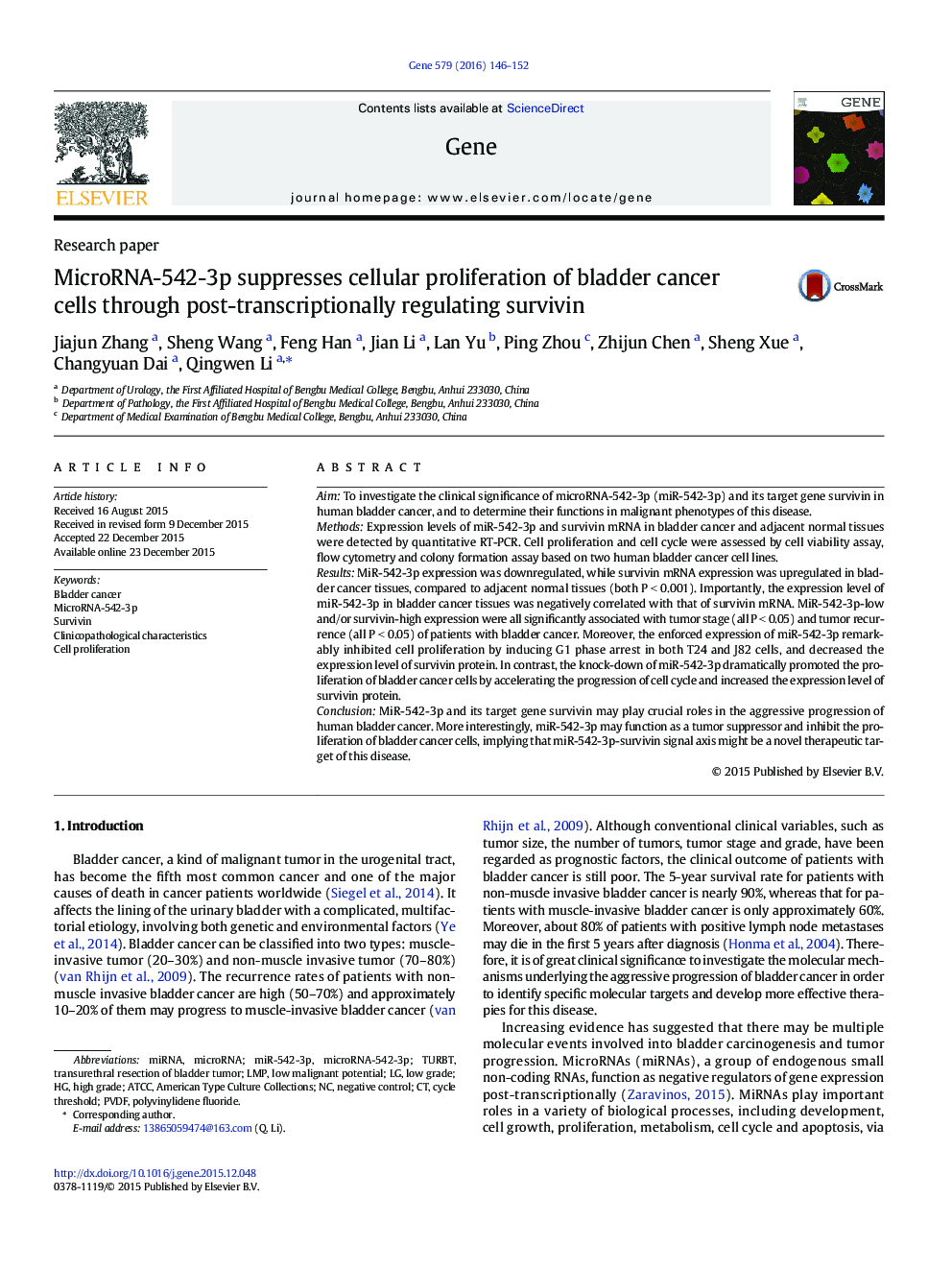| Article ID | Journal | Published Year | Pages | File Type |
|---|---|---|---|---|
| 2815189 | Gene | 2016 | 7 Pages |
•There was a negative correlation between miR-542-3p and survivin expression in BC tissues.•MiR-542-3p-survivin dysregulation was associated with advanced progression of BC patients.•MiR-542-3p inhibited the proliferation of BC cells.
AimTo investigate the clinical significance of microRNA-542-3p (miR-542-3p) and its target gene survivin in human bladder cancer, and to determine their functions in malignant phenotypes of this disease.MethodsExpression levels of miR-542-3p and survivin mRNA in bladder cancer and adjacent normal tissues were detected by quantitative RT-PCR. Cell proliferation and cell cycle were assessed by cell viability assay, flow cytometry and colony formation assay based on two human bladder cancer cell lines.ResultsMiR-542-3p expression was downregulated, while survivin mRNA expression was upregulated in bladder cancer tissues, compared to adjacent normal tissues (both P < 0.001). Importantly, the expression level of miR-542-3p in bladder cancer tissues was negatively correlated with that of survivin mRNA. MiR-542-3p-low and/or survivin-high expression were all significantly associated with tumor stage (all P < 0.05) and tumor recurrence (all P < 0.05) of patients with bladder cancer. Moreover, the enforced expression of miR-542-3p remarkably inhibited cell proliferation by inducing G1 phase arrest in both T24 and J82 cells, and decreased the expression level of survivin protein. In contrast, the knock-down of miR-542-3p dramatically promoted the proliferation of bladder cancer cells by accelerating the progression of cell cycle and increased the expression level of survivin protein.ConclusionMiR-542-3p and its target gene survivin may play crucial roles in the aggressive progression of human bladder cancer. More interestingly, miR-542-3p may function as a tumor suppressor and inhibit the proliferation of bladder cancer cells, implying that miR-542-3p-survivin signal axis might be a novel therapeutic target of this disease.
